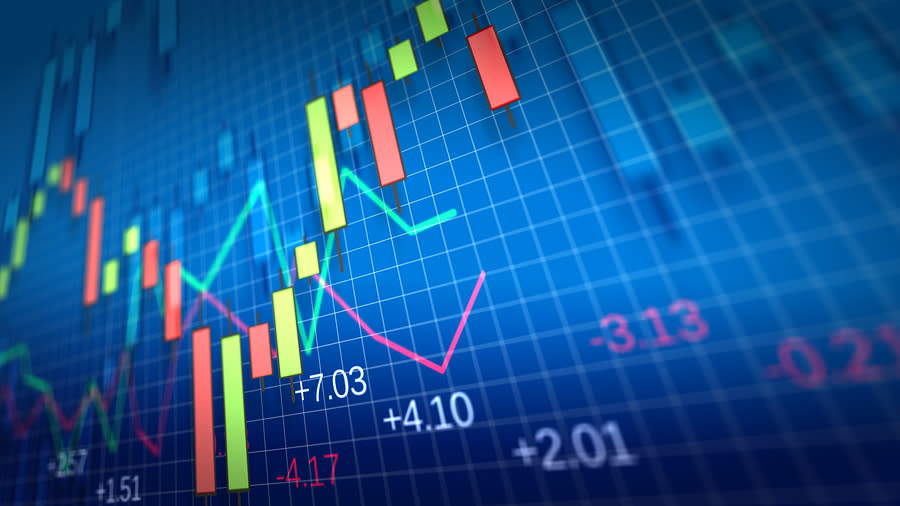3 Investing Facts About Required Minimum Distributions You Need to Know - February 03, 2020

Failing to withdraw a required minimum distribution (RMD) from your own or an inherited IRA by the deadline results in a big tax code penalty: 50%. That's right. If you were supposed to take out a minimum of $4,000 and (oops!) did not do so, you have the privilege of writing the IRS a check for $2,000. It's important to remember that the rules related to RMDs changed on January 1, 2020
In case you're like most investors, you're probably trying to build a financial portfolio that is solid enough to guarantee a comfortable retirement. Among retirement financial planners, this is known as the "accumulation phase." In this stage, your objective is to carefully invest by selecting stocks with long-term potential for your retirement nest egg. For example, you might choose Archer Daniels Midland (ADM), which is a current top ranked dividend stock.
But that's just half of retirement planning. The second part, the "distribution phase," sometimes gets overlooked even though it can be more fun to think about. That's because the distribution phase is where you determine how to spend your hard-earned assets.
Making plans for the distribution stage involves deciding where you'll live in retirement, whether you'll travel, your proposed leisure activities, and more decisions that will affect your spending during your golden years.
Along with those choices, you need to be mindful of the RMD, because it applies to the majority of retirement accounts. This IRS rule requires you to withdraw a specific minimum amount from any qualified accounts you have when you reach a certain age--previously it was 70 1/2, but beginning in 2020, it is 72.
What is the point of this mandatory withdrawal by the IRS? Not surprisingly, it's to be sure that the government gets their tax money. Without the RMD requirement, individuals could live off other income and never pay tax on retirement account gains. That cash could be left to family or friends as an inheritance and the IRS would not receive taxes from it.
The Most Important Things to Know About RMDs
What types of retirement accounts have RMDs? Qualified retirement accounts such as IRA accounts, 401(k)s, 457 plans and other tax-deferred retirement savings plans like a TSP, 403(b), TSA, SEP, or SIMPLE IRA plan require withdrawals in retirement.
When does it become necessary to begin taking distributions? Your first distribution must be taken by April 1 of the year following the calendar year that you turn 72 (for most accounts). Also, if you retire after that age, you must take your first RMD from your 401(k), profit-sharing, 403(b), or other defined contribution plan by April 1 of the year after the calendar year in which you retire.
For each subsequent year after your required beginning date, you must take your RMD by December 31. Note that you do not have to take an RMD on a Roth IRA since you paid taxes prior to contributing. Other types of Roth accounts require RMDs. However, there are ways to avoid them. For example, you can roll your Roth 401(k) into your Roth IRA.
What happens if I don't take my RMD? The penalty for not taking a required minimum distribution, or not taking a large enough distribution, is a 50% tax on the amount not withdrawn in time.
How much cash do I need to withdraw? To figure out a particular RMD, you should divide your earlier year's December 31st retirement account balance by a "distribution period" factor dependent on your age.
Here's an example to give you an idea of the math: Ann is 71 and will take her first RMD in the year following the year she turns 72. Her IRA balance toward the end of the preceding year was $100,000. Her "distribution period" factor is 27.4. Dividing $100,000 by 27.4 equals $3,649.63. This is the amount Ann is required to withdraw for her first RMD.
Learning about the "distribution phase" is just one aspect of preparing for your nest egg years.
To learn more about the tax implications of retirement spending - and much more about retirement planning - download our free guide: Retirement Made Easy.
You???ll find useful, detailed steps to help you navigate both the accumulation and distribution phases of retirement planning. Get Your FREE Guide Now
Archer Daniels Midland Company (ADM) : Free Stock Analysis Report
To read this article on Zacks.com click here.

 Yahoo Finance
Yahoo Finance 